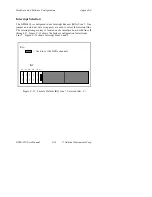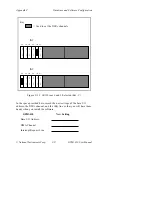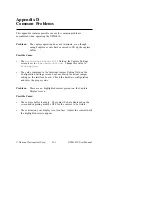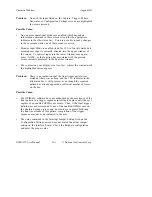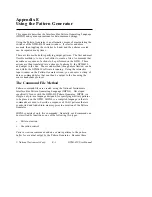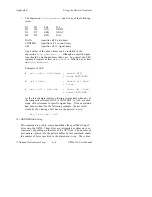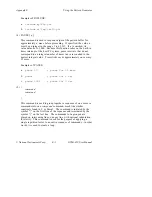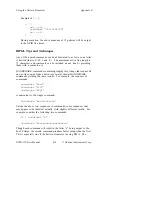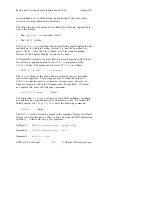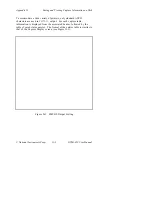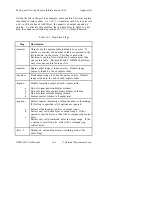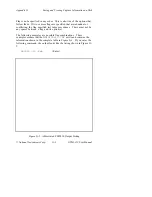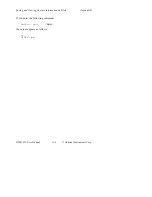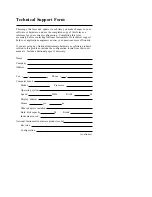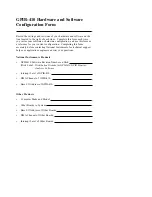
Appendix E
Using the Pattern Generator
© National Instruments Corp.
E-7
GPIB-410 User Manual
reason for this is that repetition factors do not insert extra patterns into
the pattern buffer, but merely instruct the GPIB-410 to output a fixed
portion of the buffer more than once. This fact should also be kept in
mind when a repetition factor is applied to a block of commands.
The Input Window Method
Using the interactive input window is a quick and easy means of source
handshaking a unique string of up to 75 bytes onto the GPIB without
creating a pattern command file. You can repeat the string
automatically up to 65,535 times and you can optionally send EOI along
with the last byte in the output sequence.
Outputting bytes through the input window is roughly equivalent to
executing a command file that contains only HANDSHAKE commands.
Unlike a command file, however, the input window works in conjunction
with the current monitor switch settings. Thus, for example, bytes can
be sent out as either data or commands, depending on the state of the
ATN switch in the monitor window.
The syntax for the data/command strings specified in the input window
(as well as the HANDSHAKE command) has several escape sequences
for including special 8-bit codes that are not conveniently entered as
standard ASCII characters. These escape sequences are initiated with a
backslash (
\
) followed by one or three alphanumeric characters as
shown in the following list:
\n
ASCII linefeed
\r
ASCII carriage return
\t
ASCII
horizontal
tab
\"
ASCII double quote
\\
ASCII backslash
\x
NN
Any 2-digit hexadecimal number (N = 0 through 9,
A through F)

